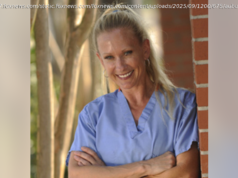There’s already been a rise in heavy downpours across the U. S., especially in the Northeast and Midwest.
If you watched the images of Hurricane Harvey from afar and thanked goodness it wasn’t happening to you, scientists say you might be feeling a little too relaxed.
Powerful storms are hitting the U. S. more often — and not just in hurricane alley.
Rising global temperatures, caused mostly by the burning of fossil fuels, have coincided with an increase in extreme storms across the United States, according to the federal government’s latest National Climate Assessment, published in 2014.
If global warming gets worse, scientists expect the frequency of once-extreme rainfall events to keep rising — even in regions where overall rainfall could decrease, like the Southwest.
The link between a warmer climate and heavier downpours is straightforward: Hotter air can hold more moisture, meaning there’s more water available for storms to wring out of the atmosphere.
The planet has warmed by nearly 2 degrees since the dawn of the Industrial Revolution, which translates to about 6% more moisture in the atmosphere, said Michael Wehner, a climate scientist at Lawrence Berkeley National Laboratory’s computational research division in California.
« That’s a big sledgehammer, » he said.
RELATED: Satellite images reveal extent of Harvey damage
Wehner was one of the lead authors of the « our changing climate » chapter of the 2014 National Climate Assessment, a semi-regular report that’s been mandated by Congress since 1990. (A partial draft of the next edition, due out in 2018, has already been released .)
Nationwide, the climate assessment shows, the strongest two-day storms occurred about 40% more often from 2000 through 2009 than they did from 1901 through 1960.
Some regions have been hit especially hard. Between 1958 and 2012, the number of extreme rainfall events increased by 71% in the Northeast, 37% in the Midwest and 27% in the Southeast. Scientists point to last year’s record-shattering rain in and around Baton Rouge, Louisiana, and 2013’s deadly floods on Colorado’s Front Range, as the kinds of events climate change has already made more likely.
If the world doesn’t curb its emission of heat-trapping greenhouse gases, some parts of the U. S. could see five times as many intense rainstorms by the end of this century as they saw at the end of the last one, according to the National Climate Assessment.
« The extremely heavy rains of Harvey are something that we expect to see more often as the dice are loaded toward heavier rain events, » said Radley Horton, a climate scientist at Columbia University’s Lamont-Doherty Earth Observatory.
THE CURRENT: Subscribe to The Desert Sun’s energy, water and climate newsletter
That trend makes the lessons of Harvey all the more relevant — and not just for the coastal communities that are often associated with extreme storms and climate impacts.
One key takeaway: Invest in flood control.
« Houston’s flood-control infrastructure is woefully out of date. It’s like 1930s and ’40s vintage, » said David Easterling, a climate scientist with the National Oceanic and Atmospheric Administration in North Carolina. « Make sure you have whatever you need in terms of infrastructure for flood control. It takes decades to build it. »
State and local governments should also look beyond traditional flood-control measures like dams and concrete channels, experts say. Horton said cities might replace some hard surfaces that create runoff with parks and other green spaces that absorb water.
RELATED: Harvey estimated to be costliest natural disaster in U. S. history
Other lessons, scientists say: Update flood-risk maps based on the observed increase in extreme rainfall and the latest available science. And be wary of building in floodplains.
That last suggestion might be tricky.
Nina Lam, an environmental scientist and expert in geographic information systems at Louisiana State University, has studied development patterns in the United States. In a paper earlier this year, she and her co-authors found that while urban growth in coastal flood zones declined from 2001 to 2011, urban growth in inland flood zones increased.
Lam has seen that trend play out in Louisiana, where she said many people moved from New Orleans to inland cities after Hurricane Katrina. Some of those people were stunned by the catastrophic floods that inundated Baton Rouge last year, Lam said.
« This kind of event is going to happen more and more often, » she said. « We have to be much more vigilant about where you locate. »
Sammy Roth writes about energy and the environment for The Desert Sun. He can be reached at sammy.roth@desertsun.com, (760) 778-4622 and @Sammy_Roth .






